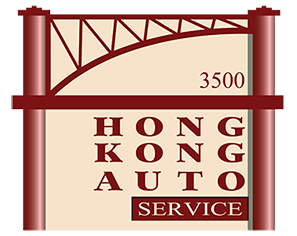Keeping Your Engine Happy: The Importance of Oil Changes
Let’s talk about one of the simplest yet most crucial maintenance tasks for your beloved vehicle: Fall Oil Changes! Regular oil changes are like a spa day for your car’s engine. Here’s why they’re so essential:
- **Cold Weather Impact:** Cold temperatures can affect the viscosity of your engine oil. Thicker oil in cold weather can make it harder for your engine to start and for oil to flow properly. Fresh, winter-grade oil is designed to remain more fluid in lower temperatures, ensuring better lubrication during cold starts.
- **Engine Protection:** Winter can be particularly tough on your engine. Properly maintained, clean oil helps protect your engine from wear and tear, especially during the initial startup when the engine is coldest and most vulnerable.
- **Reduced Efficiency:** Older or dirty oil can reduce your engine’s efficiency and potentially lead to lower gas mileage. When the weather gets colder, your engine might already be working harder to maintain performance. Fresh oil can help optimize engine performance.
- **Prevent Oil Sludging:** Over time, engine oil can accumulate impurities and become thicker, leading to sludge formation. Sludge can clog vital engine components and reduce overall engine efficiency. Changing the oil before winter can help prevent this issue.
- **Long-Term Engine Health:** Regular oil changes are a fundamental part of maintaining your vehicle’s engine health and longevity. By changing the oil before winter, you’re setting your engine up for success during the colder months and beyond.
It’s a small investment in preventive maintenance that can pay off in terms of improved performance, fuel efficiency, and engine longevity.
How to Check If Your Car’s Oil Needs to Be Changed
Regular oil changes are vital for maintaining your car’s engine health and ensuring optimal performance. But how do you know when it’s time to change the oil? While following your vehicle manufacturer’s recommended oil change interval is essential, there are also visual and practical indicators you can use to determine if your car’s oil needs changing sooner.
Refer to Your Owner’s Manual
Your owner’s manual is a valuable resource for understanding your car’s maintenance schedule, including when to change the oil. Different vehicles have varying intervals for oil changes based on factors like driving conditions and the type of oil used. Start by checking your owner’s manual to identify the recommended oil change interval for your specific car.
Check the Oil Level
Regularly checking your car’s oil level is a simple yet effective way to gauge whether it’s time for an oil change. Follow these steps:
- Park on Level Ground: Make sure your car is on a level surface to get an accurate reading.
- Turn Off the Engine: Let the engine cool down for a few minutes before checking the oil.
- Open the Hood: Locate the oil dipstick – it’s usually bright in color and has a loop or T-shape at the top.
- Remove and Wipe: Pull out the dipstick, wipe it clean with a cloth, and reinsert it fully.
- Check the Level: Pull out the dipstick again and observe where the oil line sits. There are usually two marks labeled “Full” and “Add.” The oil level should be between these marks. If it’s closer to “Add,” it’s time to add oil.
Inspect the Oil’s Condition
Checking the oil’s color and consistency can provide insights into its health. New oil is usually amber or light brown. Over time, it becomes darker due to contaminants. If you notice that the oil is extremely dark, gritty, or sludgy, it’s an indication that the oil is losing its effectiveness and needs changing.
Listen to Your Engine
If your engine starts sounding louder than usual or if you hear knocking or ticking noises, it might be a sign that your oil needs changing. Old or dirty oil can cause increased friction between engine components, leading to these sounds. Fresh oil helps reduce friction and keeps your engine running smoothly.
Pay Attention to Warning Lights
Many modern cars are equipped with oil pressure warning lights or indicators on the dashboard. If you see the oil pressure light illuminate or receive an alert, it’s crucial to address it promptly. Low oil pressure can lead to serious engine damage.
Regular oil changes are essential for maintaining your car’s engine health and overall performance. While following the manufacturer’s recommended intervals is key, keeping an eye on your oil level, inspecting the oil’s color and condition, listening for unusual engine noises, and paying attention to warning lights can help you catch potential problems early. Remember that neglecting oil changes can lead to engine damage and costly repairs. If you’re unsure about the condition of your oil or when to change it, contacting Hong Kong Auto Service is always a wise decision.
